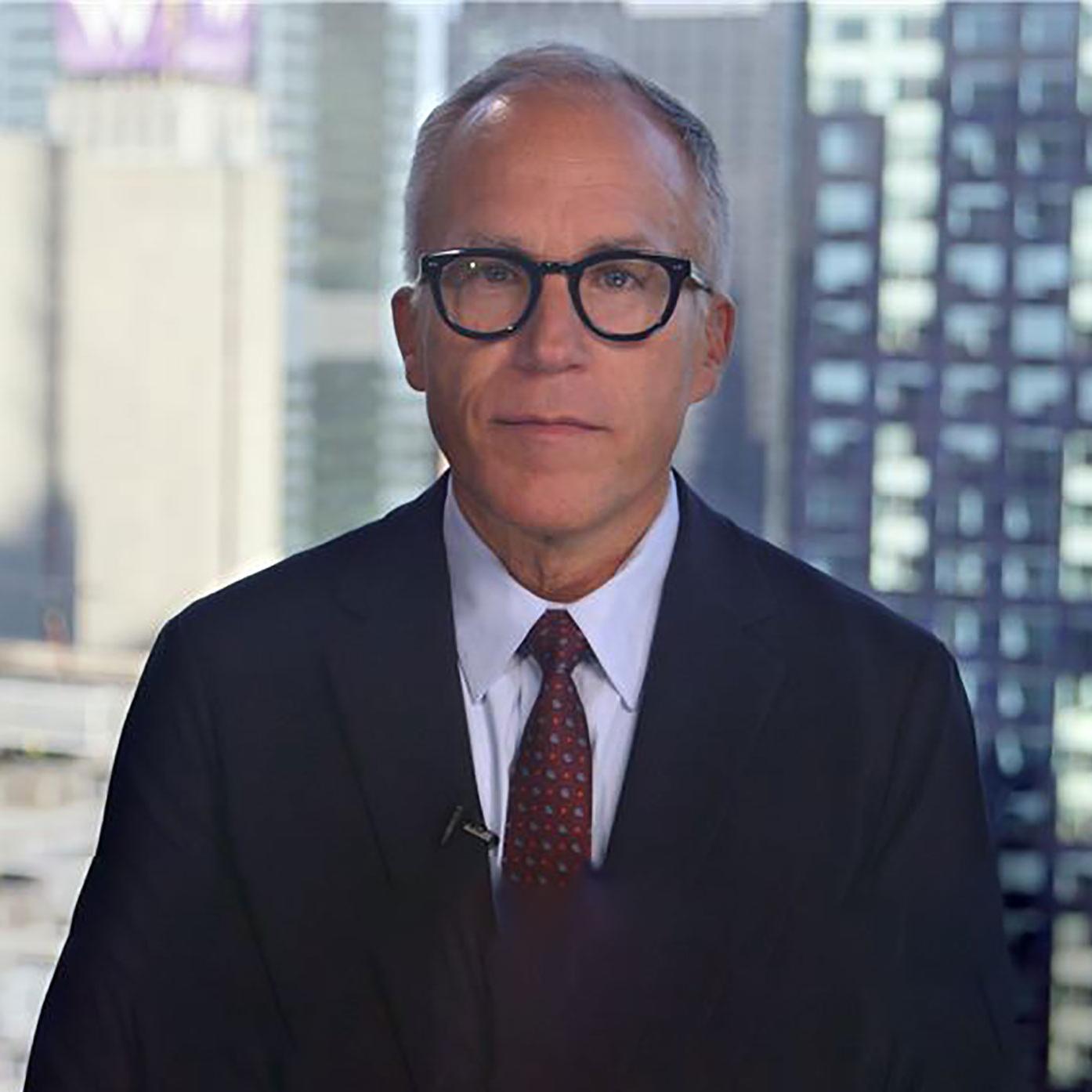
Strengthening Resilience in Los Angeles with Cleantech
- Courriel
-
Signet
-
Imprimer
Disponible en anglais seulement
In the latest episode of Sustainability Leaders, Emily Hobbs, Senior Advisor with the BMO Climate Institute, sits down with Matt Petersen, President and CEO of the Los Angeles Cleantech Incubator.
They discuss the role of startups and innovation in LA as communities rebuild after devastating wildfires. They also explored the importance of public-private partnerships as the second-most populous U.S. city prepares to host events such as the World Cup and the 2028 Olympic and Paralympic Games.
“Los Angeles has an important role to play to reduce the impacts of the climate crisis and air pollution upon people's lives and health, while creating economic opportunity to help entrepreneurs and participants in the workforce to be part of the solution,” Petersen said.
Sustainability Leaders podcast is live on all major channels, including Apple and Spotify.
Matt Petersen:
Los Angeles has an important role to play to reduce the impacts of the climate crisis and air pollution upon people's lives and health, while creating economic opportunity to help entrepreneurs and participants in the workforce to be part of the solution.
Michael Torrance:
Welcome to Sustainability Leaders. I'm Michael Torrance, Chief Sustainability Officer at BMO. On this show, we will talk with leading sustainability practitioners from the corporate, investor, academic, and NGO communities to explore how this rapidly evolving field of sustainability is impacting global investment, business practices, and our world.
Speaker 4:
The views expressed here are those of the participants and not those of Bank of Montreal, its affiliates or subsidiaries.
Emily Hobbs:
Hi, there. My name is Emily Hobbs. I'm a senior advisor with the BMO Climate Institute. And on this episode of Sustainability Leaders, I'm speaking with Matt Petersen, CEO of the Los Angeles Cleantech Incubator, also known as LACI. In our discussion today, Matt and I will focus on the clean tech landscape and where he sees opportunity to advance innovative technologies in a sustainable future. Welcome to the show, Matt. Would you please introduce yourself to our listeners and tell us about LACI, the organization that you've led since 2017?
Matt Petersen:
Thank you so much, Emily. It's great to be with you. Looking forward to this conversation. Yeah, the Los Angeles Cleantech Incubator, or better known as LACI, was started back in 2011 and grew out of a vision that then Mayor Antonio Villaraigosa had for making LA the clean tech hub of the United States and hopefully the world. A lot of ideas were put on the table and what ended up sticking was the campus that we manage and are honored to be the stewards of for the city of Los Angeles. Our landlord is officially the Department of Water Power, which is part of the city of LA. And as the largest municipal utility in the country, they have an important role to play for Los Angeles's economic development.
And that was what, along with the focus on innovation and clean tech, allowed the city to put forth the effort and what ended up being a $50 million investment into our campus of 60,000 square feet in the Arts District, so that's sort of the starting point. And then our mission as an organization, because we're an independent 501(c)(3) nonprofit organization with obviously a working relationship with the city, the mission of creating an inclusive green economy for Los Angeles and beyond not only builds on the power of the campus as a convening power and all the startups we can host on the campus, and conversations we can facilitate, and special guests we can demonstrate our work to.
It really is manifested through our three prong strategy, which is a holistic strategy. Systems design thinking that I really tried to bring to the organization more comprehensively when I arrived in 2017 as CEO. And that involves three strategies, unlocking innovation through incubating of startups, transforming markets through catalytic partnerships, policy and pilots, and enhancing communities through workforce training and bringing and supporting under-represented populations to be part of the green economy. So those overlapping strategies are a really holistic approach, a Venn diagram, if you will, of really bringing the best of what we can offer and really being a microcosm of the larger green economy we want to create for Los Angeles and beyond and how can we be a model.
Emily Hobbs:
And how about yourself? Can you share what brought you to LACI and what were you doing before?
Matt Petersen:
Yeah, thanks for asking. When I was asked to consider applying for the role of CEO of LACI, the two co-founders of the organization, Neal Anderson and Fred Walti. And Fred was the CEO had really brought the best of the team that they had assembled to help manifest the vision. And Fred had decided that he wanted to retire and move on to sharing the model through an organization he created. And I was in the mayor's office as the first chief sustainability officer at the time and also on the board of LACI. And I had joined the Garcetti administration, Eric Garcetti was elected and became mayor in 2013. I joined his team as the first chief sustainability officer for Los Angeles and really came in to provide a framework and what became the Sustainable City Plan, the first comprehensive sustainability plan for Los Angeles that integrated the economy, the environment, and equity.
And it was really ambitious and yet had near term actionable priorities as a comprehensive approach, and again, a holistic effort to try to get the whole of government to work together on climate action. And we did everything from not only setting targets by near term while the mayor was in office, not just long-term goals that were set when he would be gone from office, but while the mayor was in office and to hold ourselves accountable in creating a system where we would have each department have a chief sustainability officer assigned by their general manager and be part of this cross-cutting effort to make LA a leader on climate action and sustainability.
What brought me to the mayor's office was the work I did when I ran Global Green for a long time, where I was able to first start with an incredible opportunity to work with Mikhail Gorbachev who had left his role as president of the Soviet Union. And he recognized that the environment would be the greatest crisis humanity faces in the 21st century. And he started talking about that in the late eighties and early nineties and then got asked to run an organization for which he called the Red Cross for the environment, and therefore the Green Cross was created in the US, it was known as Global Green due to trademark reasons. So I did that and really worked on everything from nuclear and chemical weapons disarmament policies to water scarcity around shared river and water basins to what we really led in the US, which was a focus on how do we help improve the lives of those in need while really advancing sustainability and climate action.
And in 2005 when Hurricane Katrina hit, it took sort of that work we'd been doing for a good long time, a decade or so, and took it to help put forth a vision for rebuilding New Orleans to be more sustainable and green after Hurricane Katrina in response to that climate disaster where climate change made that storm so much worse and the engineering failures of the levees made it just much worse. And so put forth a vision and went to work and spent a decade almost, about eight years trying to help New Orleans rebuild differently. And that experience led me to help similarly after Superstorm Sandy a bit after the request of President Clinton and Haiti and then other post-disaster efforts where you try to put forth a vision to find the silver lining in an otherwise awful situation and doing my best to help in the same vein now with the fires here in Los Angeles and how can we rebuild more resiliently.
Emily Hobbs:
Thank you for sharing your background, Matt, and demonstrates all the expertise you bring to LACI. And I'm excited to dive into these topics with you and our conversation. You mentioned the LA fires and so maybe starting there before fully diving in, I want to acknowledge that there were the devastating fires that took place earlier this year in Los Angeles, and I want to see how your community and the team at LACI are doing?
Matt Petersen:
Well, thanks for asking. I mean, everybody in Los Angeles knows somebody that lost their home or lost their job or was affected directly, and it's a collective trauma, collective blow to the region. And really alarming of course in seeing how this is really the worst climate disaster since hurricane Katrina in the United States. We knew for a long time that these conditions were possible. Fires have obviously been a part of life here for a long time, and with the nature urban land interface being increasingly encroaching of housing developments in mountains and hilly areas that are harder to get to, obviously creating more risk. And yet we also know with climate science that the extreme climate swings that we went through a period of extreme precipitation, then followed by a period of extreme drought where we had point 10 inches of rain in almost nine months, and then the severe Santa Ana conditions of wind speeds that were just at a level that we don't see very often here and just made for the unfortunate perfect storm of conditions that just devastated the Palisades and Altadena.
There's a lot of lessons to be learned, of course, and how we rebuild is to me fundamental, just like in New Orleans where we really and others emphasized, if you're going to rebuild here, you need to rebuild resiliently in climate-resistant strategies. Now we need to look at similar strategies. How do we rebuild wildfire proof or resistant homes? We really continue to focus on how to reduce those emissions of those homes to be part of the solution, but also reduce energy costs and create long-term affordability for everyone.
We're thinking about how we can at least see, bring the innovation from our startups and seek other innovations from technologies as well as business model and policy innovations to help residents and communities rebuild better.
Emily Hobbs:
Part of LACI's model includes piloting new sustainable solutions that address local needs. So as we're talking about the rebuilding efforts that will take place in the months and years to come in the Los Angeles region, what role do you see clean tech and clean tech startups playing in those efforts?
Matt Petersen:
We don't have an exhaustive set of solutions, of course, in our startup portfolio. Yet we do have some representative solutions that we think are fundamentally important and we want to invite more startups with the kinds of solutions we need to make LA a leader in climate action and also in terms of adaptation and disaster prevention. So a company like DelFire, who's been part of LACI's portfolio for several years, and is an alumni company, they've created a wildfire detection solution that they've been piloting across the state. And you can imagine that a technology of using a camera-based solution with AI software to be able to alert, to be able to distinguish between activity and then provide a early alert to first responders can be enormously helpful.
But we also have, as we think about rebuilding, a startup that's been part of our alumni, one of our alumni companies for a while, and that's Connect Homes and they build sustainable manufactured homes that some are higher end, so it could be of use to communities like the Palisades where it's a more expensive neighborhood or they have a more affordable option that could be applicable to other neighborhoods. And so we're looking at all the sort of suite of solutions that we can have out there from our startup innovations and then see what more we can call to join us and help solve some of these challenges, both in disaster prevention, that it's tied to the climate crisis, as well as to really rebuilding better and more resiliently from the get go.
Emily Hobbs:
Thanks, Matt. I want to talk about all the events that will be coming to Los Angeles. I know that next year LA is hosting the Men's World Cup and then the Olympics in 2028. What excites you most as you think about the next five years in the greater LA region?
Matt Petersen:
Yeah, we have for a long time at LACI, since beginning in 2017 and launched in 2018, thought about how do we use the notion at the time, the World Cup and Super Bowl had not been announced, but the Olympics had been announced for the Olympic and Paralympic games for 2028. And so with key leaders from utilities and state regulators and others in Los Angeles put forth a bold vision to how do we welcome the world in 2028 where we're leading and it's possible to move emissions-free through the region for people and goods.
And as we are now three and a half years from the games, we're creating Tiger teams to work together to go after funding to invest in the projects we've identified that would maximize the ability to run electric buses, whether they're transit buses or school buses during the games, but then provide long-term benefit to school districts and to the transit agencies along with those heavy-duty trucks that pick up the containers of goods at the ports of LA and Long Beach. How do we, similarly, we have the 710, which is the primary freeway that the goods, the containers are put on trucks and depart the ports through, where does the charging infrastructure go? And so we're really looking at that along with what shared mobility solutions can we get to have in place by the time of the Olympics, and what distributed energy resources can we get in place?
Solar and storage and charging can be responsive to the needs of the utilities, but also provide reduction in peak demand and demand response opportunities in frontline communities or disadvantaged communities that are near Olympic venues. But a lot of the communities surrounding the venues are lower-income, disadvantaged communities, historically disinvestment, less transit and transportation options. So how do we invest in these communities, provide long-term benefit as well as to the visitors to the games. That's been our strategy between the Transportation, Electrification and then later the Clean Energy Partnership, which is focused on building electrification and these distributed energy resources to add more resiliency to the grid while we meet the needs of transportation, electrification and building decarbonization.
Emily Hobbs:
Thank you, Matt, for sharing that example. And to build on the theme of public-private partnerships, you shared that this is one example of a way that LACI is thinking about engaging with stakeholders in the lead-up to the Olympics and the World Cup. What would you say are some of the key ingredients that lead to a successful public-private partnership, either from your time at LACI or your previous experiences?
Matt Petersen:
I've worked and led multi-sectoral public-private partnerships for a long time, and number one is vision. Where's the shared vision that everybody has? And then trust, I think are the two most fundamental things. And you don't always start with the trust, but if you're doing your best to bring together multi-sectoral partners and public-private partners who show that commitment and that you're working towards a vision, it makes it possible to bring people together to the table. But then how do you keep them there and delivering results as well as delivering value? And it doesn't always lead to, and we're not going to single-handedly through our partnership, even with all these great partners, from automakers, to utilities, to others, we're not going to single-handedly deliver all these solutions by the time of the Olympics.
We have some, obviously, elected officials and regulators that are appointed by elected officials who have enormous power and influence, yet it's really about the learnings and the trust that's built and how can it be a place people can share ideas, refine their ideas, create partnerships that come out of it as well to deliver those same sort of results we're trying to achieve.
Emily Hobbs:
I appreciate those reflections, Matt. And I'm also proud to share with our listeners that BMO and LACI have had a philanthropic partnership for years and have really seen your vision in action. LACI works with entrepreneurs and startups to accelerate the commercialization of clean technologies which benefit communities through product pilots and workforce development. Matt, can you bring to life for us how a community may feel and see the impact of clean tech being deployed locally?
Matt Petersen:
Yeah, it's a great question. I mean, unless you're coming to our campus in the Arts District, the La Kretz Innovation Campus that we're stewards of for the city where you can see a lot of great examples of startup innovations, we really make an effort to find ways to help deliver the benefits of the green economy to those neighborhoods and communities that wouldn't normally get all the clean tech innovations showing up in their neighborhoods first or if ever. And here in LA, we went through a period where there were a lot of electric mobility solutions that showed up on the streets and sidewalks of say, Santa Monica, those shared mobility solutions didn't always make their way to South LA or to Boyle Heights. And so how do we make sure that people with access to these opportunities to engage with the technologies and more importantly, reduce emissions and improve their lives?
An example was we put out an RFI several years ago, what ideas do you have, public agency, community-based organization, other entities that would advance transportation electrification and provide the community you serve with the benefit? One of the ideas that came up was from our city of LA Housing Authority, a public housing agency for the city of LA, and they wanted to add shared mobility solutions for our residents who lacked adequate transportation. And many of them lacked access to a reliable car, which in LA is key for a lot of things. And so we went and put out a call for solutions and found a company called Envoy that at that time had been putting their electric cars or luxury electric cars at high-end properties, condos and apartment buildings, and said, look, would you be willing to put vehicles at a housing authority location dedicated to public housing residents? And they did. And it had in the first iteration of the pilot had higher utilization of those cars. We put in Leafs, Nissan partnered with us to provide the Leafs because they wanted to see how they'd operate in this model.
And we were able to get funding for the pilot from the state legislature, and we in the housing authority agreed to host it and was dedicated to the residents. We provided additional support to educate the community, provided some funding for their community coaches, the residents there to be able to help people understand how to use the program and educate people about it. And it turned out to be big success. And then that led to state and federal legislation to try to expand them all. So our approach is looking at how we pilot innovations and then scale what works. It doesn't always happen, of course, you learn often more than the failures, than successes.
Emily Hobbs:
Absolutely. And that's a great example of a program that would've been felt for many members of the community where the program was initiated. And I'll share with our listeners that since LACI was founded, your organization has helped over 500 portfolio companies raise over a billion dollars and create over 2000 jobs through the Los Angeles region. You just shared an impactful example with us. I'm going to ask for one more because I think when I think about LACI and the work that you've done, it's your entrepreneurs that come to mind and the portfolio companies that they've started. So of the companies that you've worked with and the entrepreneurs that you have supported, can you share with our listeners one more example that really sticks with you?
Matt Petersen:
Yeah, I think another version of our shared mobility solutions, we had a startup called Pedal Movement. They were providing electric bike sharing program for the city of Long Beach and wanted to expand their offerings. And we were able to partner with them to deliver an e-bike share program at the same public housing location. And they provided the support and the services, and we learned that part of the challenge in getting utilization of those bikes was we couldn't allow people under 18 for insurance requirements or liability concerns. And we found a way finally to get 16 and up to use the bikes.
And because some of the older residents weren't comfortable riding bikes or in this case e-bikes. So we really worked to figure out how to learn from that and then went and tried to look at different models of how we can get more people on an e-bike and perhaps reduce the use of cars. And so we took learnings from that pilot and partnered with another organization, a community organization that also had sort of responded to our call for ideas and needs. And Eastside Bike Riders Club responded, and they had locations in Watts and Compton and other parts of South and Southeast Los Angeles, and they were able to partner with us, and we found ways to deliver those e-bikes for free to start with funding again from the same pot of money from the legislature.
But more importantly, we had 90 bikes deployed in I think a waiting list of 60 to 70 people even when we went to $25 a month for use of the bike. And last I heard there were 9 or 10 people that got out of that pool of 70 users who got rid of their car because they could use an e-bike. And then one story of how a guy used the e-bike to go to his job interview at LAX and get a job. And so the other thing we've integrated into our pilots like this is also workforce training. How do we trend workforce training on how to maintain and fix electric scooters and e-bikes, EV chargers, electric vehicles, and those graduates get placed in paid internships with our startups and our community partners. So we're really looking at, again, that comprehensive, holistic approach.
Emily Hobbs:
Thanks for that impactful example, Matt. We've covered a lot today, and I want to give you the chance to add anything else. Before we wrap up, is there anything about LACI's work or the LA region that you'd like to share with our audience?
Matt Petersen:
The city of Los Angeles and greater LA, which is in the county alone, there's 10 million people in the city. There's 4 million people within that county, and it's a much bigger region even than that. And we recognize that as the third-largest metropolitan economy in the world, Los Angeles has an important role to play in increasing American competitiveness and innovation and responses to reduce the impacts of the climate crisis and air pollution upon people's lives and health, while creating economic opportunity to help entrepreneurs and participants in the workforce to be part of the solution and create economic growth for underserved neighborhoods and populations.
We're using this unique mix is also a way to make best efforts to welcome the world in 2028 and to show what is possible here. How we can really lead with innovation and create cutting-edge solutions and pivot those solutions to benefit communities that otherwise wouldn't get access to these opportunities all while reducing costs, reducing emissions and public health impact. And really at the same time, given the fires, welcome the world to a region that is led by example and is leading the way and inspires others, we hope. That's our intention. And at the same time, sharing our model with cities across the country to learn from the work we've done with local governments here and our entrepreneurs to invite and scale innovation that works. That's our commitment and what we want to make sure people understand. And we so appreciate BMO for your support and hope others will listen to this and be inspired and join us on the journey.
Emily Hobbs:
Well, I think that's a perfect place to leave our listeners, Matt and I want to thank you again for joining us today and for this thoughtful conversation. I can't wait to continue to watch LACI's journey and the impact that you have. And thank you to our listeners. Stay tuned for more episodes of Sustainability Leaders.
Matt Petersen:
Thank you so much.
Michael Torrance:
Thanks for listening to Sustainability Leaders. This podcast is presented by BMO. You can find our show on Apple Podcasts, Spotify, or your favorite podcast player. Press the follow button if you want to get notified when new episodes are published. We value your input, so please leave a rating, review and any feedback that you might have or visit us at BMO.com/sustainabilityleaders. Our show and resources are produced with support from BMO's Marketing team and Puddle Creative. Until next time, thanks for listening and have a great week.
Speaker 4:
For BMO disclosures, please visit BMOCM.com/podcast/disclaimer.
-
Temps de lecture
-
Écouter
Arrêter
-
Agrandir | Réduire le texte
Disponible en anglais seulement
In the latest episode of Sustainability Leaders, Emily Hobbs, Senior Advisor with the BMO Climate Institute, sits down with Matt Petersen, President and CEO of the Los Angeles Cleantech Incubator.
They discuss the role of startups and innovation in LA as communities rebuild after devastating wildfires. They also explored the importance of public-private partnerships as the second-most populous U.S. city prepares to host events such as the World Cup and the 2028 Olympic and Paralympic Games.
“Los Angeles has an important role to play to reduce the impacts of the climate crisis and air pollution upon people's lives and health, while creating economic opportunity to help entrepreneurs and participants in the workforce to be part of the solution,” Petersen said.
Sustainability Leaders podcast is live on all major channels, including Apple and Spotify.
Matt Petersen:
Los Angeles has an important role to play to reduce the impacts of the climate crisis and air pollution upon people's lives and health, while creating economic opportunity to help entrepreneurs and participants in the workforce to be part of the solution.
Michael Torrance:
Welcome to Sustainability Leaders. I'm Michael Torrance, Chief Sustainability Officer at BMO. On this show, we will talk with leading sustainability practitioners from the corporate, investor, academic, and NGO communities to explore how this rapidly evolving field of sustainability is impacting global investment, business practices, and our world.
Speaker 4:
The views expressed here are those of the participants and not those of Bank of Montreal, its affiliates or subsidiaries.
Emily Hobbs:
Hi, there. My name is Emily Hobbs. I'm a senior advisor with the BMO Climate Institute. And on this episode of Sustainability Leaders, I'm speaking with Matt Petersen, CEO of the Los Angeles Cleantech Incubator, also known as LACI. In our discussion today, Matt and I will focus on the clean tech landscape and where he sees opportunity to advance innovative technologies in a sustainable future. Welcome to the show, Matt. Would you please introduce yourself to our listeners and tell us about LACI, the organization that you've led since 2017?
Matt Petersen:
Thank you so much, Emily. It's great to be with you. Looking forward to this conversation. Yeah, the Los Angeles Cleantech Incubator, or better known as LACI, was started back in 2011 and grew out of a vision that then Mayor Antonio Villaraigosa had for making LA the clean tech hub of the United States and hopefully the world. A lot of ideas were put on the table and what ended up sticking was the campus that we manage and are honored to be the stewards of for the city of Los Angeles. Our landlord is officially the Department of Water Power, which is part of the city of LA. And as the largest municipal utility in the country, they have an important role to play for Los Angeles's economic development.
And that was what, along with the focus on innovation and clean tech, allowed the city to put forth the effort and what ended up being a $50 million investment into our campus of 60,000 square feet in the Arts District, so that's sort of the starting point. And then our mission as an organization, because we're an independent 501(c)(3) nonprofit organization with obviously a working relationship with the city, the mission of creating an inclusive green economy for Los Angeles and beyond not only builds on the power of the campus as a convening power and all the startups we can host on the campus, and conversations we can facilitate, and special guests we can demonstrate our work to.
It really is manifested through our three prong strategy, which is a holistic strategy. Systems design thinking that I really tried to bring to the organization more comprehensively when I arrived in 2017 as CEO. And that involves three strategies, unlocking innovation through incubating of startups, transforming markets through catalytic partnerships, policy and pilots, and enhancing communities through workforce training and bringing and supporting under-represented populations to be part of the green economy. So those overlapping strategies are a really holistic approach, a Venn diagram, if you will, of really bringing the best of what we can offer and really being a microcosm of the larger green economy we want to create for Los Angeles and beyond and how can we be a model.
Emily Hobbs:
And how about yourself? Can you share what brought you to LACI and what were you doing before?
Matt Petersen:
Yeah, thanks for asking. When I was asked to consider applying for the role of CEO of LACI, the two co-founders of the organization, Neal Anderson and Fred Walti. And Fred was the CEO had really brought the best of the team that they had assembled to help manifest the vision. And Fred had decided that he wanted to retire and move on to sharing the model through an organization he created. And I was in the mayor's office as the first chief sustainability officer at the time and also on the board of LACI. And I had joined the Garcetti administration, Eric Garcetti was elected and became mayor in 2013. I joined his team as the first chief sustainability officer for Los Angeles and really came in to provide a framework and what became the Sustainable City Plan, the first comprehensive sustainability plan for Los Angeles that integrated the economy, the environment, and equity.
And it was really ambitious and yet had near term actionable priorities as a comprehensive approach, and again, a holistic effort to try to get the whole of government to work together on climate action. And we did everything from not only setting targets by near term while the mayor was in office, not just long-term goals that were set when he would be gone from office, but while the mayor was in office and to hold ourselves accountable in creating a system where we would have each department have a chief sustainability officer assigned by their general manager and be part of this cross-cutting effort to make LA a leader on climate action and sustainability.
What brought me to the mayor's office was the work I did when I ran Global Green for a long time, where I was able to first start with an incredible opportunity to work with Mikhail Gorbachev who had left his role as president of the Soviet Union. And he recognized that the environment would be the greatest crisis humanity faces in the 21st century. And he started talking about that in the late eighties and early nineties and then got asked to run an organization for which he called the Red Cross for the environment, and therefore the Green Cross was created in the US, it was known as Global Green due to trademark reasons. So I did that and really worked on everything from nuclear and chemical weapons disarmament policies to water scarcity around shared river and water basins to what we really led in the US, which was a focus on how do we help improve the lives of those in need while really advancing sustainability and climate action.
And in 2005 when Hurricane Katrina hit, it took sort of that work we'd been doing for a good long time, a decade or so, and took it to help put forth a vision for rebuilding New Orleans to be more sustainable and green after Hurricane Katrina in response to that climate disaster where climate change made that storm so much worse and the engineering failures of the levees made it just much worse. And so put forth a vision and went to work and spent a decade almost, about eight years trying to help New Orleans rebuild differently. And that experience led me to help similarly after Superstorm Sandy a bit after the request of President Clinton and Haiti and then other post-disaster efforts where you try to put forth a vision to find the silver lining in an otherwise awful situation and doing my best to help in the same vein now with the fires here in Los Angeles and how can we rebuild more resiliently.
Emily Hobbs:
Thank you for sharing your background, Matt, and demonstrates all the expertise you bring to LACI. And I'm excited to dive into these topics with you and our conversation. You mentioned the LA fires and so maybe starting there before fully diving in, I want to acknowledge that there were the devastating fires that took place earlier this year in Los Angeles, and I want to see how your community and the team at LACI are doing?
Matt Petersen:
Well, thanks for asking. I mean, everybody in Los Angeles knows somebody that lost their home or lost their job or was affected directly, and it's a collective trauma, collective blow to the region. And really alarming of course in seeing how this is really the worst climate disaster since hurricane Katrina in the United States. We knew for a long time that these conditions were possible. Fires have obviously been a part of life here for a long time, and with the nature urban land interface being increasingly encroaching of housing developments in mountains and hilly areas that are harder to get to, obviously creating more risk. And yet we also know with climate science that the extreme climate swings that we went through a period of extreme precipitation, then followed by a period of extreme drought where we had point 10 inches of rain in almost nine months, and then the severe Santa Ana conditions of wind speeds that were just at a level that we don't see very often here and just made for the unfortunate perfect storm of conditions that just devastated the Palisades and Altadena.
There's a lot of lessons to be learned, of course, and how we rebuild is to me fundamental, just like in New Orleans where we really and others emphasized, if you're going to rebuild here, you need to rebuild resiliently in climate-resistant strategies. Now we need to look at similar strategies. How do we rebuild wildfire proof or resistant homes? We really continue to focus on how to reduce those emissions of those homes to be part of the solution, but also reduce energy costs and create long-term affordability for everyone.
We're thinking about how we can at least see, bring the innovation from our startups and seek other innovations from technologies as well as business model and policy innovations to help residents and communities rebuild better.
Emily Hobbs:
Part of LACI's model includes piloting new sustainable solutions that address local needs. So as we're talking about the rebuilding efforts that will take place in the months and years to come in the Los Angeles region, what role do you see clean tech and clean tech startups playing in those efforts?
Matt Petersen:
We don't have an exhaustive set of solutions, of course, in our startup portfolio. Yet we do have some representative solutions that we think are fundamentally important and we want to invite more startups with the kinds of solutions we need to make LA a leader in climate action and also in terms of adaptation and disaster prevention. So a company like DelFire, who's been part of LACI's portfolio for several years, and is an alumni company, they've created a wildfire detection solution that they've been piloting across the state. And you can imagine that a technology of using a camera-based solution with AI software to be able to alert, to be able to distinguish between activity and then provide a early alert to first responders can be enormously helpful.
But we also have, as we think about rebuilding, a startup that's been part of our alumni, one of our alumni companies for a while, and that's Connect Homes and they build sustainable manufactured homes that some are higher end, so it could be of use to communities like the Palisades where it's a more expensive neighborhood or they have a more affordable option that could be applicable to other neighborhoods. And so we're looking at all the sort of suite of solutions that we can have out there from our startup innovations and then see what more we can call to join us and help solve some of these challenges, both in disaster prevention, that it's tied to the climate crisis, as well as to really rebuilding better and more resiliently from the get go.
Emily Hobbs:
Thanks, Matt. I want to talk about all the events that will be coming to Los Angeles. I know that next year LA is hosting the Men's World Cup and then the Olympics in 2028. What excites you most as you think about the next five years in the greater LA region?
Matt Petersen:
Yeah, we have for a long time at LACI, since beginning in 2017 and launched in 2018, thought about how do we use the notion at the time, the World Cup and Super Bowl had not been announced, but the Olympics had been announced for the Olympic and Paralympic games for 2028. And so with key leaders from utilities and state regulators and others in Los Angeles put forth a bold vision to how do we welcome the world in 2028 where we're leading and it's possible to move emissions-free through the region for people and goods.
And as we are now three and a half years from the games, we're creating Tiger teams to work together to go after funding to invest in the projects we've identified that would maximize the ability to run electric buses, whether they're transit buses or school buses during the games, but then provide long-term benefit to school districts and to the transit agencies along with those heavy-duty trucks that pick up the containers of goods at the ports of LA and Long Beach. How do we, similarly, we have the 710, which is the primary freeway that the goods, the containers are put on trucks and depart the ports through, where does the charging infrastructure go? And so we're really looking at that along with what shared mobility solutions can we get to have in place by the time of the Olympics, and what distributed energy resources can we get in place?
Solar and storage and charging can be responsive to the needs of the utilities, but also provide reduction in peak demand and demand response opportunities in frontline communities or disadvantaged communities that are near Olympic venues. But a lot of the communities surrounding the venues are lower-income, disadvantaged communities, historically disinvestment, less transit and transportation options. So how do we invest in these communities, provide long-term benefit as well as to the visitors to the games. That's been our strategy between the Transportation, Electrification and then later the Clean Energy Partnership, which is focused on building electrification and these distributed energy resources to add more resiliency to the grid while we meet the needs of transportation, electrification and building decarbonization.
Emily Hobbs:
Thank you, Matt, for sharing that example. And to build on the theme of public-private partnerships, you shared that this is one example of a way that LACI is thinking about engaging with stakeholders in the lead-up to the Olympics and the World Cup. What would you say are some of the key ingredients that lead to a successful public-private partnership, either from your time at LACI or your previous experiences?
Matt Petersen:
I've worked and led multi-sectoral public-private partnerships for a long time, and number one is vision. Where's the shared vision that everybody has? And then trust, I think are the two most fundamental things. And you don't always start with the trust, but if you're doing your best to bring together multi-sectoral partners and public-private partners who show that commitment and that you're working towards a vision, it makes it possible to bring people together to the table. But then how do you keep them there and delivering results as well as delivering value? And it doesn't always lead to, and we're not going to single-handedly through our partnership, even with all these great partners, from automakers, to utilities, to others, we're not going to single-handedly deliver all these solutions by the time of the Olympics.
We have some, obviously, elected officials and regulators that are appointed by elected officials who have enormous power and influence, yet it's really about the learnings and the trust that's built and how can it be a place people can share ideas, refine their ideas, create partnerships that come out of it as well to deliver those same sort of results we're trying to achieve.
Emily Hobbs:
I appreciate those reflections, Matt. And I'm also proud to share with our listeners that BMO and LACI have had a philanthropic partnership for years and have really seen your vision in action. LACI works with entrepreneurs and startups to accelerate the commercialization of clean technologies which benefit communities through product pilots and workforce development. Matt, can you bring to life for us how a community may feel and see the impact of clean tech being deployed locally?
Matt Petersen:
Yeah, it's a great question. I mean, unless you're coming to our campus in the Arts District, the La Kretz Innovation Campus that we're stewards of for the city where you can see a lot of great examples of startup innovations, we really make an effort to find ways to help deliver the benefits of the green economy to those neighborhoods and communities that wouldn't normally get all the clean tech innovations showing up in their neighborhoods first or if ever. And here in LA, we went through a period where there were a lot of electric mobility solutions that showed up on the streets and sidewalks of say, Santa Monica, those shared mobility solutions didn't always make their way to South LA or to Boyle Heights. And so how do we make sure that people with access to these opportunities to engage with the technologies and more importantly, reduce emissions and improve their lives?
An example was we put out an RFI several years ago, what ideas do you have, public agency, community-based organization, other entities that would advance transportation electrification and provide the community you serve with the benefit? One of the ideas that came up was from our city of LA Housing Authority, a public housing agency for the city of LA, and they wanted to add shared mobility solutions for our residents who lacked adequate transportation. And many of them lacked access to a reliable car, which in LA is key for a lot of things. And so we went and put out a call for solutions and found a company called Envoy that at that time had been putting their electric cars or luxury electric cars at high-end properties, condos and apartment buildings, and said, look, would you be willing to put vehicles at a housing authority location dedicated to public housing residents? And they did. And it had in the first iteration of the pilot had higher utilization of those cars. We put in Leafs, Nissan partnered with us to provide the Leafs because they wanted to see how they'd operate in this model.
And we were able to get funding for the pilot from the state legislature, and we in the housing authority agreed to host it and was dedicated to the residents. We provided additional support to educate the community, provided some funding for their community coaches, the residents there to be able to help people understand how to use the program and educate people about it. And it turned out to be big success. And then that led to state and federal legislation to try to expand them all. So our approach is looking at how we pilot innovations and then scale what works. It doesn't always happen, of course, you learn often more than the failures, than successes.
Emily Hobbs:
Absolutely. And that's a great example of a program that would've been felt for many members of the community where the program was initiated. And I'll share with our listeners that since LACI was founded, your organization has helped over 500 portfolio companies raise over a billion dollars and create over 2000 jobs through the Los Angeles region. You just shared an impactful example with us. I'm going to ask for one more because I think when I think about LACI and the work that you've done, it's your entrepreneurs that come to mind and the portfolio companies that they've started. So of the companies that you've worked with and the entrepreneurs that you have supported, can you share with our listeners one more example that really sticks with you?
Matt Petersen:
Yeah, I think another version of our shared mobility solutions, we had a startup called Pedal Movement. They were providing electric bike sharing program for the city of Long Beach and wanted to expand their offerings. And we were able to partner with them to deliver an e-bike share program at the same public housing location. And they provided the support and the services, and we learned that part of the challenge in getting utilization of those bikes was we couldn't allow people under 18 for insurance requirements or liability concerns. And we found a way finally to get 16 and up to use the bikes.
And because some of the older residents weren't comfortable riding bikes or in this case e-bikes. So we really worked to figure out how to learn from that and then went and tried to look at different models of how we can get more people on an e-bike and perhaps reduce the use of cars. And so we took learnings from that pilot and partnered with another organization, a community organization that also had sort of responded to our call for ideas and needs. And Eastside Bike Riders Club responded, and they had locations in Watts and Compton and other parts of South and Southeast Los Angeles, and they were able to partner with us, and we found ways to deliver those e-bikes for free to start with funding again from the same pot of money from the legislature.
But more importantly, we had 90 bikes deployed in I think a waiting list of 60 to 70 people even when we went to $25 a month for use of the bike. And last I heard there were 9 or 10 people that got out of that pool of 70 users who got rid of their car because they could use an e-bike. And then one story of how a guy used the e-bike to go to his job interview at LAX and get a job. And so the other thing we've integrated into our pilots like this is also workforce training. How do we trend workforce training on how to maintain and fix electric scooters and e-bikes, EV chargers, electric vehicles, and those graduates get placed in paid internships with our startups and our community partners. So we're really looking at, again, that comprehensive, holistic approach.
Emily Hobbs:
Thanks for that impactful example, Matt. We've covered a lot today, and I want to give you the chance to add anything else. Before we wrap up, is there anything about LACI's work or the LA region that you'd like to share with our audience?
Matt Petersen:
The city of Los Angeles and greater LA, which is in the county alone, there's 10 million people in the city. There's 4 million people within that county, and it's a much bigger region even than that. And we recognize that as the third-largest metropolitan economy in the world, Los Angeles has an important role to play in increasing American competitiveness and innovation and responses to reduce the impacts of the climate crisis and air pollution upon people's lives and health, while creating economic opportunity to help entrepreneurs and participants in the workforce to be part of the solution and create economic growth for underserved neighborhoods and populations.
We're using this unique mix is also a way to make best efforts to welcome the world in 2028 and to show what is possible here. How we can really lead with innovation and create cutting-edge solutions and pivot those solutions to benefit communities that otherwise wouldn't get access to these opportunities all while reducing costs, reducing emissions and public health impact. And really at the same time, given the fires, welcome the world to a region that is led by example and is leading the way and inspires others, we hope. That's our intention. And at the same time, sharing our model with cities across the country to learn from the work we've done with local governments here and our entrepreneurs to invite and scale innovation that works. That's our commitment and what we want to make sure people understand. And we so appreciate BMO for your support and hope others will listen to this and be inspired and join us on the journey.
Emily Hobbs:
Well, I think that's a perfect place to leave our listeners, Matt and I want to thank you again for joining us today and for this thoughtful conversation. I can't wait to continue to watch LACI's journey and the impact that you have. And thank you to our listeners. Stay tuned for more episodes of Sustainability Leaders.
Matt Petersen:
Thank you so much.
Michael Torrance:
Thanks for listening to Sustainability Leaders. This podcast is presented by BMO. You can find our show on Apple Podcasts, Spotify, or your favorite podcast player. Press the follow button if you want to get notified when new episodes are published. We value your input, so please leave a rating, review and any feedback that you might have or visit us at BMO.com/sustainabilityleaders. Our show and resources are produced with support from BMO's Marketing team and Puddle Creative. Until next time, thanks for listening and have a great week.
Speaker 4:
For BMO disclosures, please visit BMOCM.com/podcast/disclaimer.
Autre contenu intéressant

Tom Steyer : Les solutions climatiques devraient rendre la vie plus facile et meilleure
Un plus grand nombre d’entreprises américaines et canadiennes se tournent vers la lutte contre les changements climatiques en raison des attentes de leurs clients : Résultats du sondage
L’importance croissante de la résilience des chaînes d’approvisionnement

L’aspect économique de l’élimination du carbone : un entretien avec Deep Sky

Financement des minéraux critiques : Occasions d’élaborer de nouveaux cadres de placement

Élargissement de l’accès à l’énergie solaire : Leçons tirées par GRID Alternatives

Validating Breakthrough Energy Concepts, a Discussion with George Hathaway

How Developers and Builders Are Paving the Way for a Greener Future

From Farm to Future: How Funding Solutions are Shaping Agricultural Emissions
Questions et réponses : Pourquoi la déclaration volontaire des émissions devrait-elle être une priorité?
Pourquoi la durabilité est une source de bonnes affaires : Principaux points retenus du Forum économique international des Amériques (FEIA) de 2024, à Toronto

Building for Tomorrow: Real Estate, Construction, and Sustainability
Comprendre l’incidence de la biodiversité sur les entreprises
Les femmes entrepreneures favorisent la durabilité : réflexion sur les résultats du défi WE Empower lié aux objectifs de développement durable des Nations Unies
Pourquoi une politique liée à la chaleur extrême est importante pour les entreprises
Stratégies climatiques dans le secteur de l’immobilier commercial : gérer les risques

Immeubles résidentiels à logements multiples carboneutres au Canada : Analyse du coût et de la valeur de l’actif

BMO Equity Research on the AI + Data Center Build Out: Sustainability Impacts, Second Order Beneficiaries

Le coût des risques climatiques dans le secteur agricole aux États-Unis

Making Renewable Energy Technology Accessible to Underserved Communities: GRID Alternatives in Conversation

Comptabilisation du carbone : Comment renforcer les plans climatiques des entreprises

Les progrès de la technologie des batteries alimentent l’optimisme au sujet de l’industrie des VE

Les femmes jouent un rôle de premier plan dans le domaine du climat et du développement durable

Le rôle de l’exploitation minière responsable dans la transition vers les énergies propres : entretien avec Rohitesh Dhawan, chef de la direction de l’ICMM
Décloisonner le développement durable pour l’intégrer aux fonctions de base

Températures extrêmes : comment les villes nord-américaines amplifient-elles le changement climatique?

Questions climatiques : rôle de plus en plus important des hauts dirigeants

Transforming the Textile Industry: Apparel Impact Institute in Conversation
Trois idées inspirées de la Semaine du climat pour passer à l’action à la COP28

Protecting Outdoor Spaces: The Conservation Alliance in Conversation

Building Meaningful Connections with Nature: Parks California in Conversation

Comment les investissements dans le captage du carbone peuvent générer des crédits carbone

Free, Prior and Informed Consent (FPIC): Mark Podlasly in Conversation

Comment les concessionnaires automobiles contribuent à la transition vers la carboneutralité

Les feux de forêt au Canada brûlent toujours: explications d’experts

Quick Listen: Michael Torrance on Empowering Your Organization to Operationalize Sustainability

Quick Listen: Darryl White on the Importance of US-Canada Partnership

North America’s Critical Minerals Advantage: Deep Dive on Community Engagement

Evolving Mining for a Sustainable Energy Transition: ICMM CEO Rohitesh Dhawan in Conversation

BMO Equity Research on BMO Radicle and the World of Carbon Credits

Public Policy and the Energy Transition: Howard Learner in Conversation

Taskforce on Nature-Related Financial Disclosure (TNFD) – A Plan for Integrating Nature into Business

ESG Trends in the Base Metal and Diversified Mining Industries: BMO Equity Research Report

COP27 : Les problèmes de sécurité énergétique et l’incertitude économique ralentiront-t-ils la transition climatique?

RoadMap Project: An Indigenous-led Paradigm Shift for Economic Reconciliation

On-Farm Carbon and Emissions Management: Opportunities and Challenges

Intégration des facteurs ESG dans les petites et moyennes entreprises : Conférence de Montréal

Investment Opportunities for a Net-Zero Economy: A Conversation at the Milken Institute Global Conference

How Hope, Grit, and a Hospital Network Saved Maverix Private Capital Founder John Ruffolo

Hydrogen’s Role in the Energy Transition: Matt Fairley in Conversation

Key Takeaways on Ag, Food, Fertilizer & ESG from BMO’s Farm to Market Conference

Building an ESG Business Case in the Food Sector: The Food Institute

Financer la transition vers la carboneutralité : une collaboration entre EDC et BMO

Refonte au Canada pour un monde carboneutre : Conversation avec Corey Diamond d’Efficacité énergétique Canada

The Role of Hydrogen in the Energy Transition: FuelCell Energy CEO Jason Few in Conversation


Tackling Climate Change in Metals and Mining: ICMM CEO Rohitesh Dhawan in Conversation

Why Changing Behaviour is Key to a Low Carbon Future – Dan Barclay

The Post 2020 Biodiversity Framework – A Discussion with Basile Van Havre

Using Geospatial Big Data for Climate, Finance and Sustainability

The Global Energy Transition: Darryl White & John Graham Discuss

The Risk of Permafrost Thaw on People, Infrastructure & Our Future Climate

Climate Change & Flood Risk: Implications for Real Estate Markets

Director of ESG at BMO Talks COP26 & the Changing ESG Landscape

Candidature du Canada pour accueillir le nouveau siège social de l'ISSB

Comprendre la Journée nationale de la vérité et de la réconciliation

Comprendre la Journée nationale de la vérité et de la réconciliation

Combler l’écart de richesse entre les groupes raciaux grâce à des actions mesurables

Biggest Trends in Food and Ag, From ESG to Inflation to the Supply Chain

Understanding Biodiversity Management: Best Practices and Innovation

The Changing Face of Sustainability: tentree for a Greener Planet

Favoriser l’autonomisation dans une perspective d’équité raciale et de genre

Episode 31: Valuing Natural Capital – A Discussion with Pavan Sukhdev

Episode 29: What 20 Years of ESG Engagement Can Teach Us About the Future

Episode 28: Bloomberg: Enhancing ESG Disclosure through Data-Driven Solutions

Episode 27: Preventing The Antimicrobial Resistance Health Crisis

Episode 25: Achieving Sustainability In The Food Production System

Episode 23: TC Transcontinental – A Market Leader in Sustainable Packaging

Episode 16: Covid-19 Implications and ESG Funds with Jon Hale

Episode 13: Faire face à la COVID-19 en optant pour des solutions financières durables

Épisode 09 : Le pouvoir de la collaboration en matière d'investissement ESG

Épisode 08 : La tarification des risques climatiques, avec Bob Litterman

Épisode 07 : Mobiliser les marchés des capitaux en faveur d’une finance durable

Épisode 06 : L’investissement responsable – Tendances et pratiques exemplaires canadiennes

Épisode 04 : Divulgation de renseignements relatifs à la durabilité : Utiliser le modèle de SASB

Épisode 03 : Taxonomie verte: le plan d'action pour un financement durable de l'UE

Épisode 02 : Analyser les risques climatiques pour les marchés financiers












